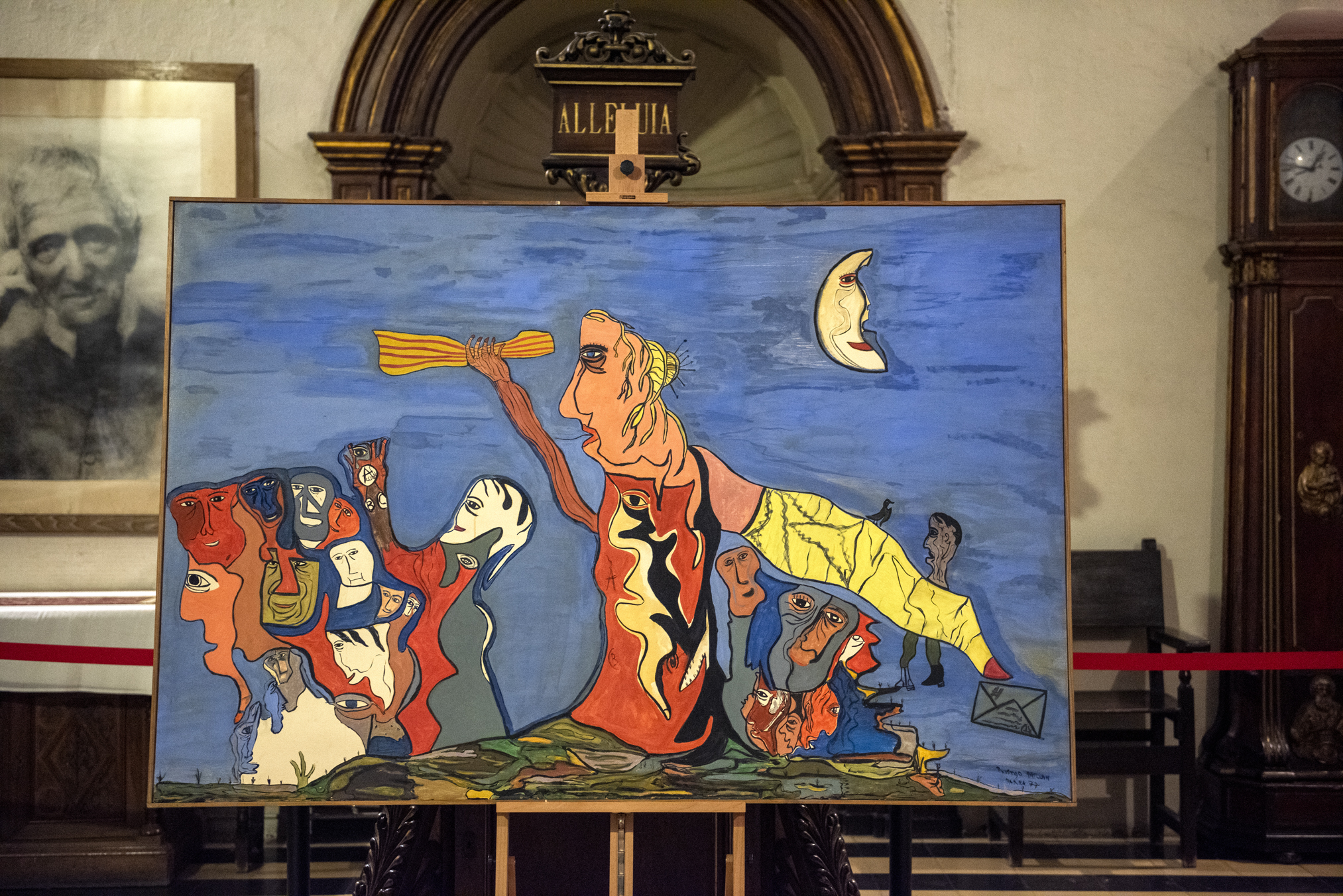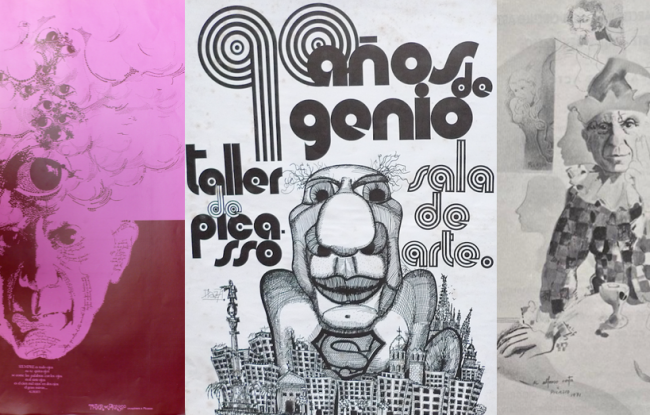Half a century later, the painting Memory, Freedom, Hope (1977), by the artist Domingo Millán (Alcoy, 1947 – 2016), has been exhibited again in Barcelona, coinciding with the 50th anniversary of the art gallery Taller de Picasso.
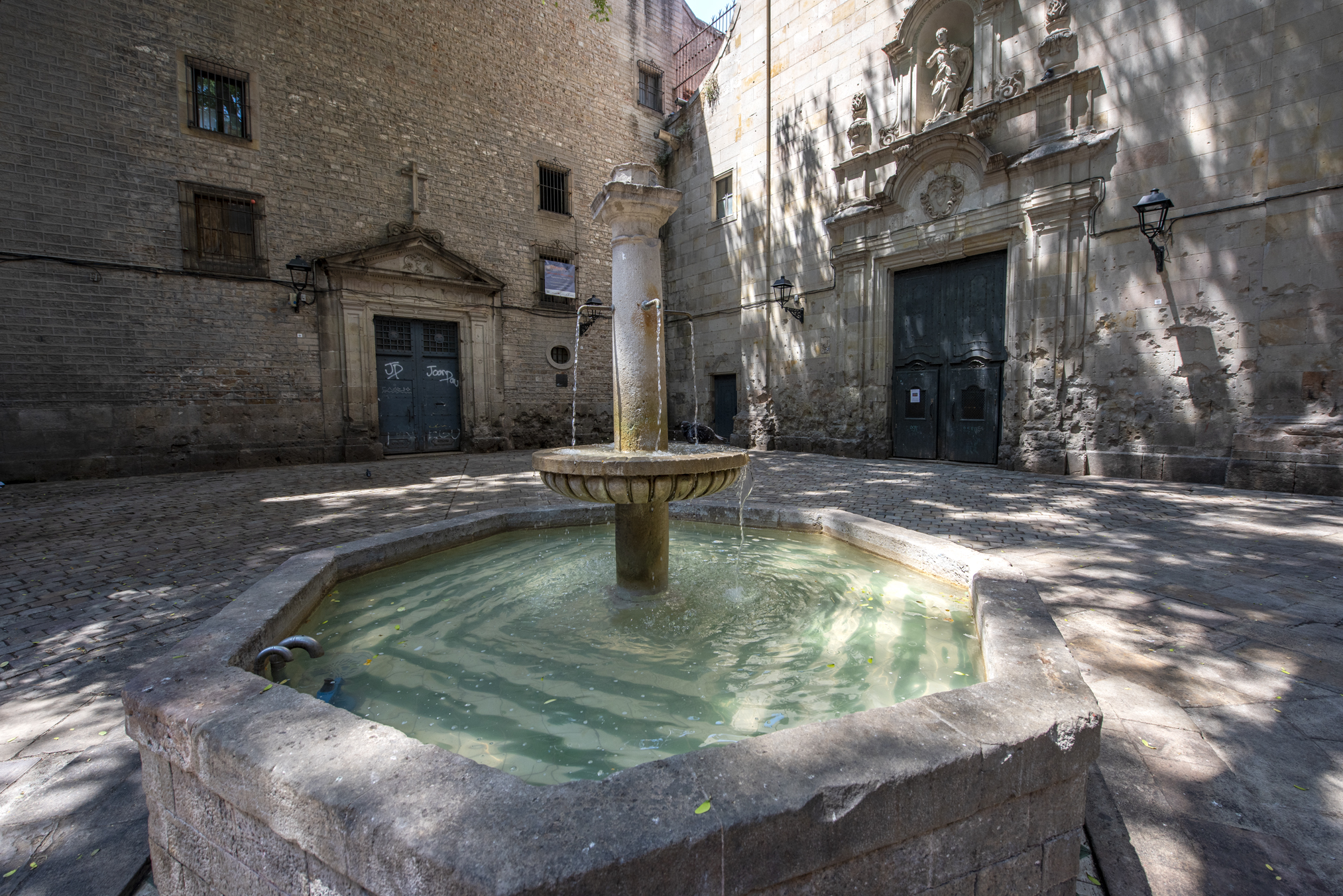 Sant Felip Neri, with the trail of shrapnel from the bombs. /Photo: Lorenzo Duaso
Sant Felip Neri, with the trail of shrapnel from the bombs. /Photo: Lorenzo Duaso
The artwork, which alludes in one of its three parts to the bombings that Barcelona suffered in 1938, could be seen on July 23 and 24 (with an arranged visit) in the sacristy of the church of San Felip Neri, right on the place where one of the bombs fell that killed 42 people, about thirty of whom were children.
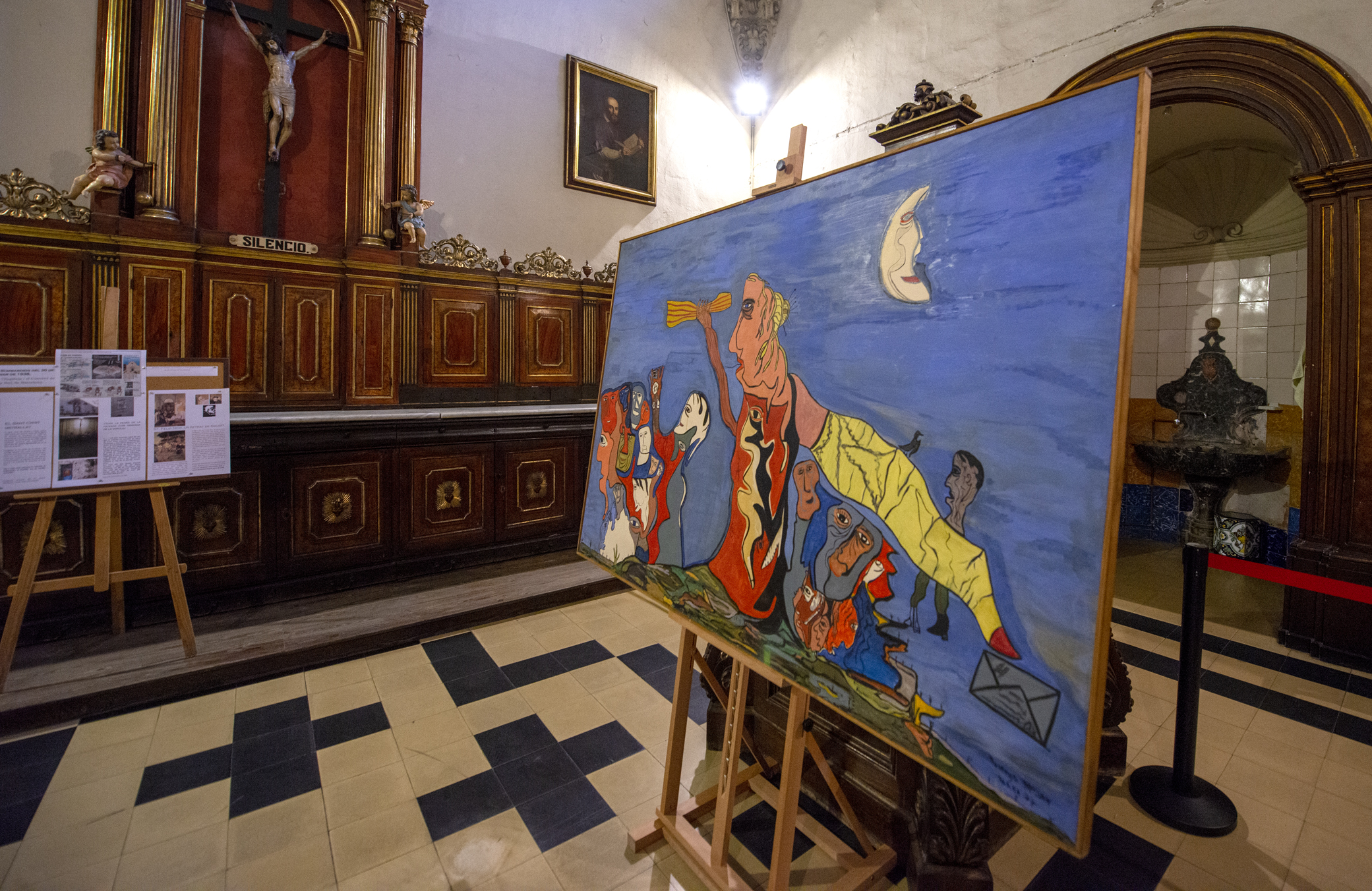 The Gernika of Barcelona, in the sacristy of Sant Felip Neri. Photo: Lorenzo Duaso
The Gernika of Barcelona, in the sacristy of Sant Felip Neri. Photo: Lorenzo Duaso

Historical information on the bombing of Sant Felip Neri in 1938. Photo/ Lorenzo Duaso
The painting, known as the Gernika de Barcelona, was exposed for 41 hours, the same period of time that lasted one of the most intense bombardments on the Catalan capital on March 16, 17 and 18, 1938, when 44 tons of bombs dropped by the Aviazione Legionaria Italiana. Result: 670 dead and 1,200 wounded.
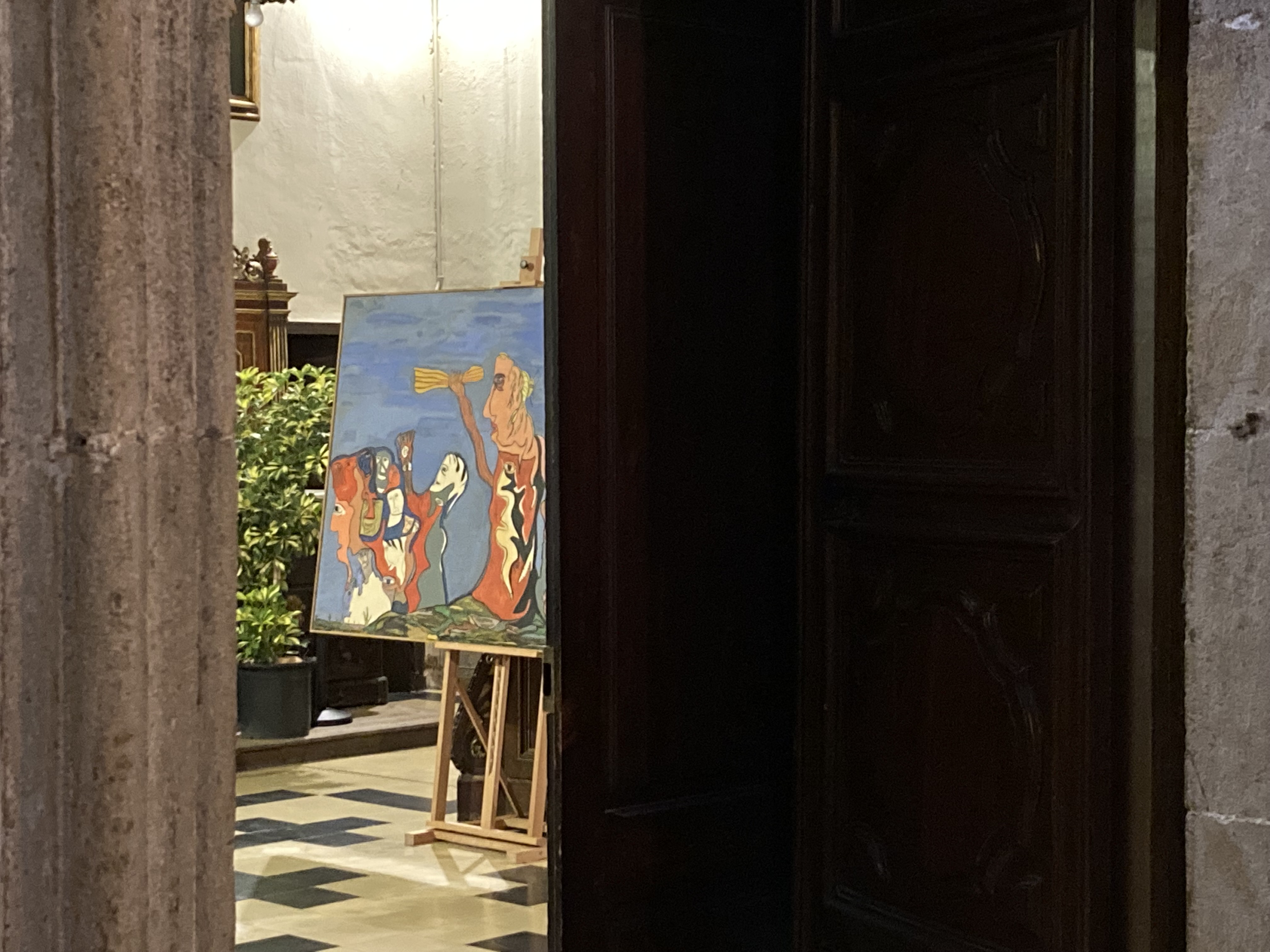
The Gernika of Barcelona, in the sacristy. / Photo: Toni Ayala
Domingo Millán painted the painting for the Taller de Picasso gallery in 1977. The artwork contains 18 main symbols, which have been decoded thanks to the clues that the artist left in his previous artworks.
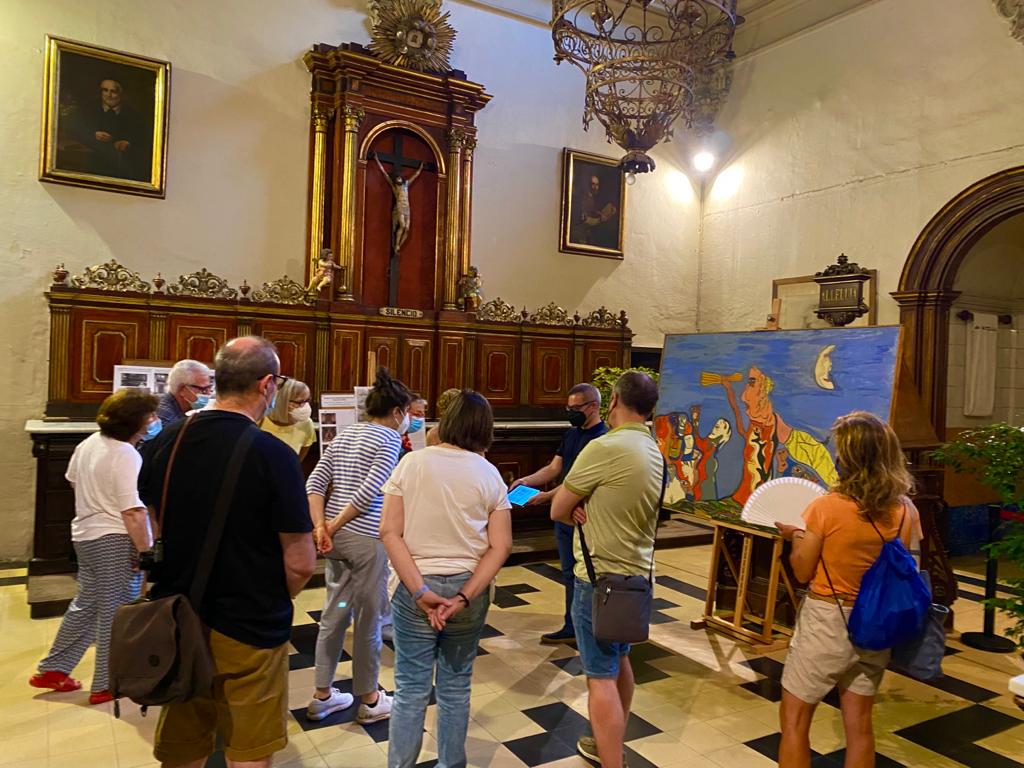
One of the guided tours to see the painting. / Photo: Taller de Picasso
The painting is divided into three parts: first (Memory), description of the night of the Spanish Civil War, with the bombing of Barcelona and the years of the dictatorship; second (Liberty), illustrates the Transition to Democracy in Spain, represented by the Statue of Liberty as the main character; and the third (Hope), the desire for a better future, with peace, dialogue and respect for cultural diversity in the Iberian Peninsula, with special attention to Catalan culture.
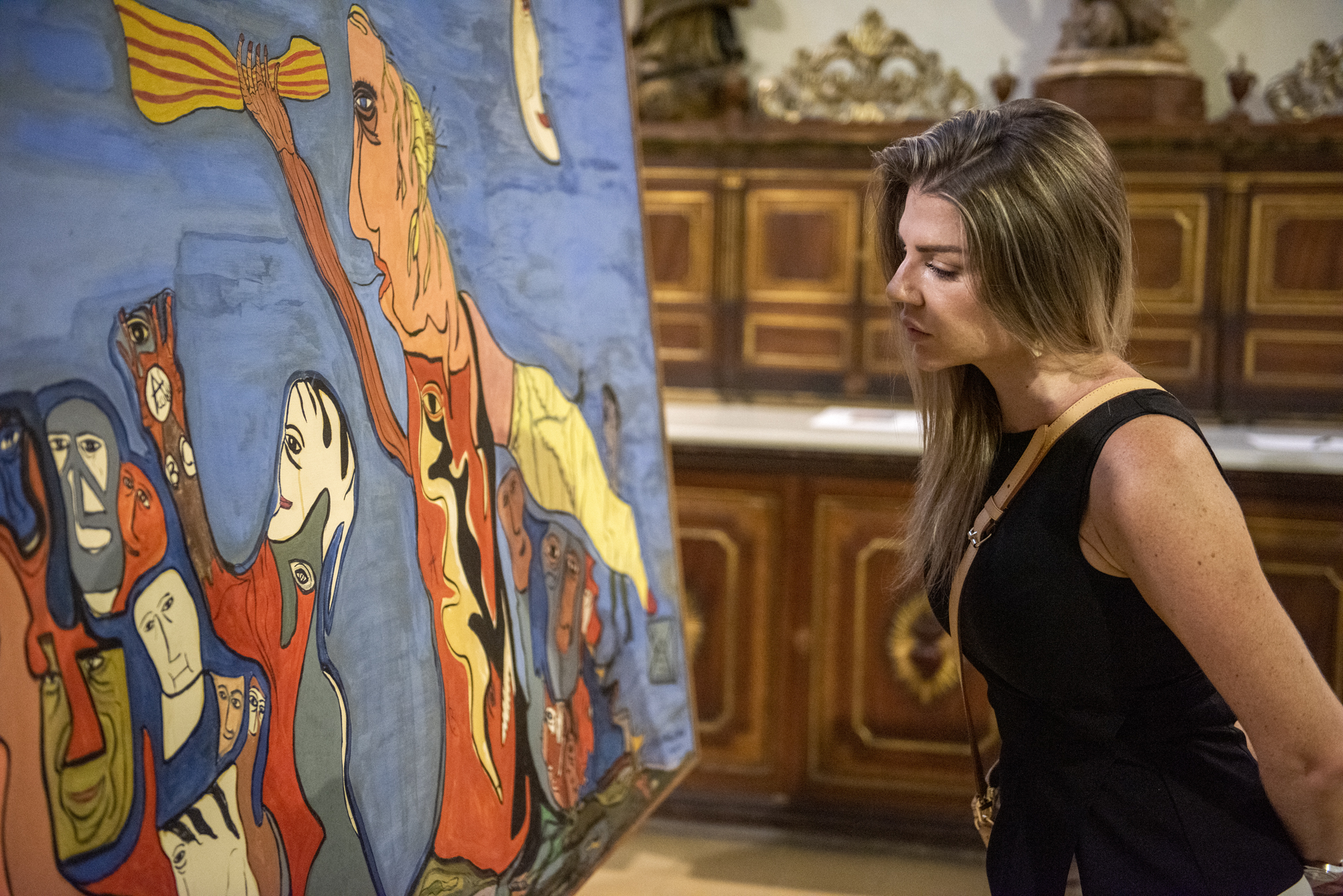
Observing the painting in detail./ Photo: Lorenzo Duaso
“A jewel for the city of Barcelona”
During the presentation of the painting to San Felip Neri, the Councilor for Culture of the Barcelona City Council, Jordi Martí, remarked the gesture of the Co·lecció Jordi Costa del Taller de Picasso “to offer this little jewel to the city of Barcelona”, a artwork “full of symbolism” that has been able to approach the people of Barcelona.
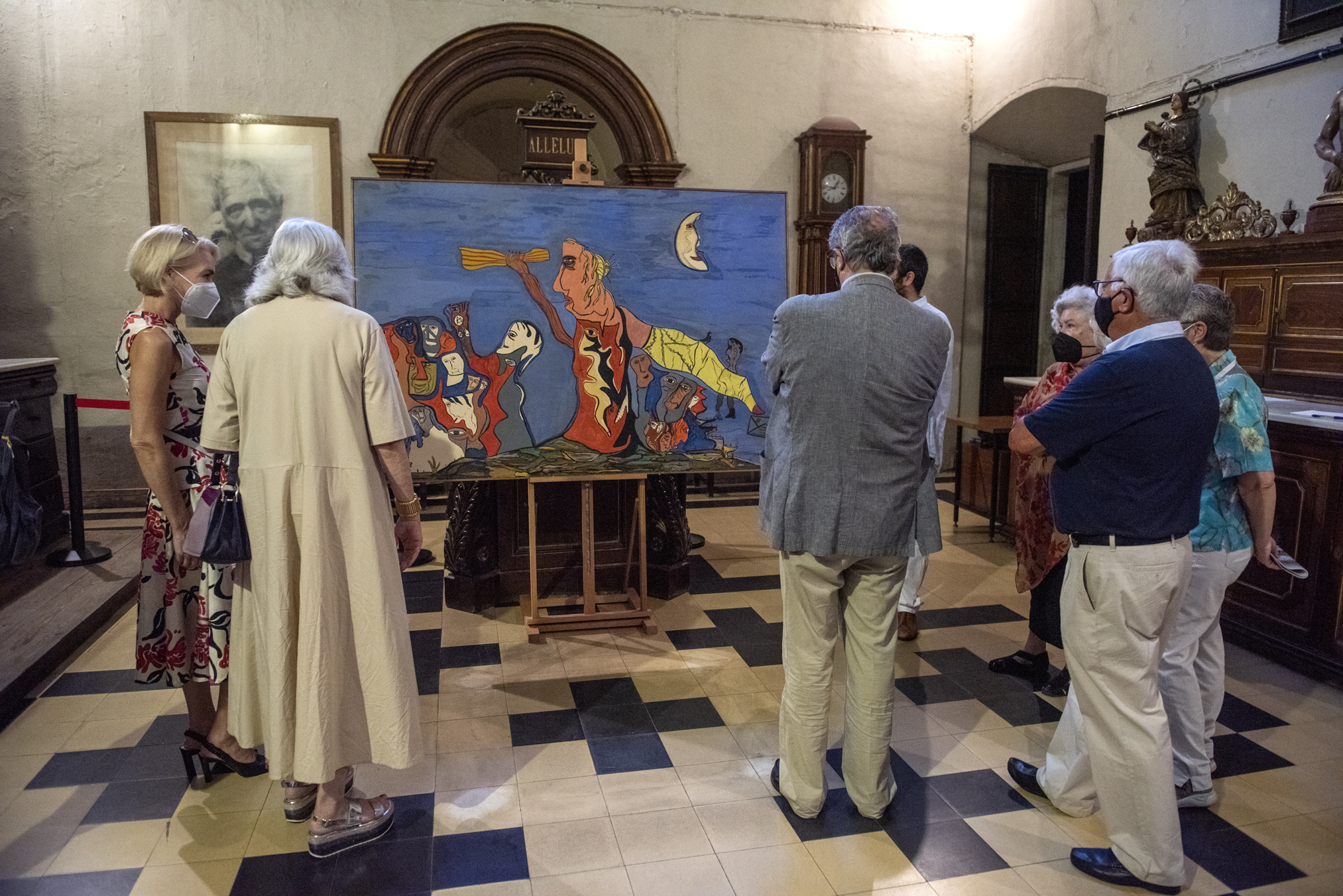
Guests to the presentation observing the painting. / Photo: Lorenzo Duaso
In this sense, Jordi Martí highlighted “the pairing” of exhibiting the painting in the church of San Felip Neri for 41 hours in memory of the victims of the bombings of the Spanish Civil War.
 Hida Bencomo Ensesa, owner of the collection, presenting the painting to the Councilor for Culture of the City Council of Barcelona, Jordi Martí. / Photo: Lorenzo Duaso
Hida Bencomo Ensesa, owner of the collection, presenting the painting to the Councilor for Culture of the City Council of Barcelona, Jordi Martí. / Photo: Lorenzo Duaso
50th anniversary of Taller de Picasso
Jordi Costa (1949-2015) founded and directed the art room Taller de Picasso, which was open between 1971 and 1996. The gallery owner and publisher created a space of creative freedom in the heart of Barcelona, near the Rambla.
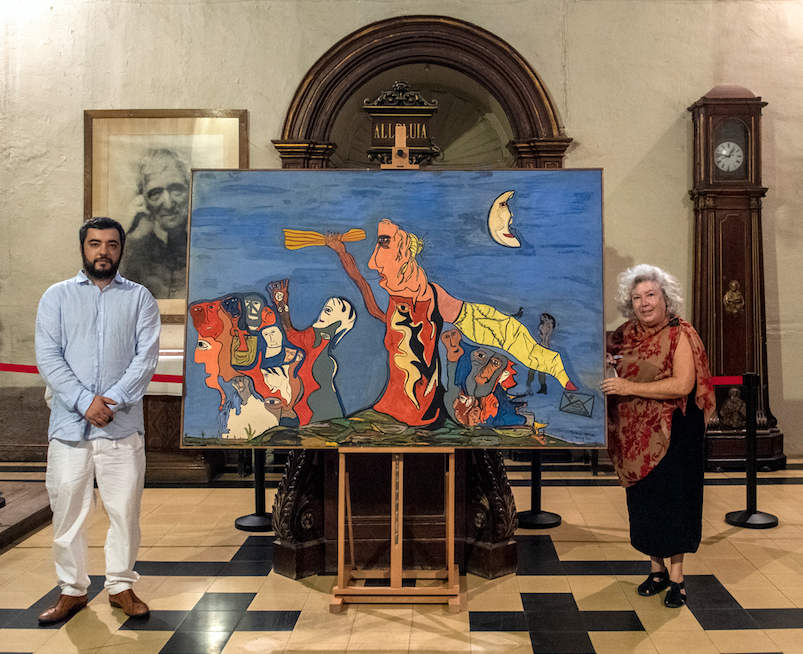
Joan Costa, son of Jordi Costa, and Hilda Bencomo Ensesa, widow of the gallery owner, with the painting in San Felip Neri. / Photo: Lorenzo Duaso
Artists from all over the world exhibited their artworks in Taller de Picasso, an art gallery that captured the social and cultural evolution of Barcelona and the country since the end of the Franco regime, through the democratic transition and even before, during and after the 1992 Olympics.
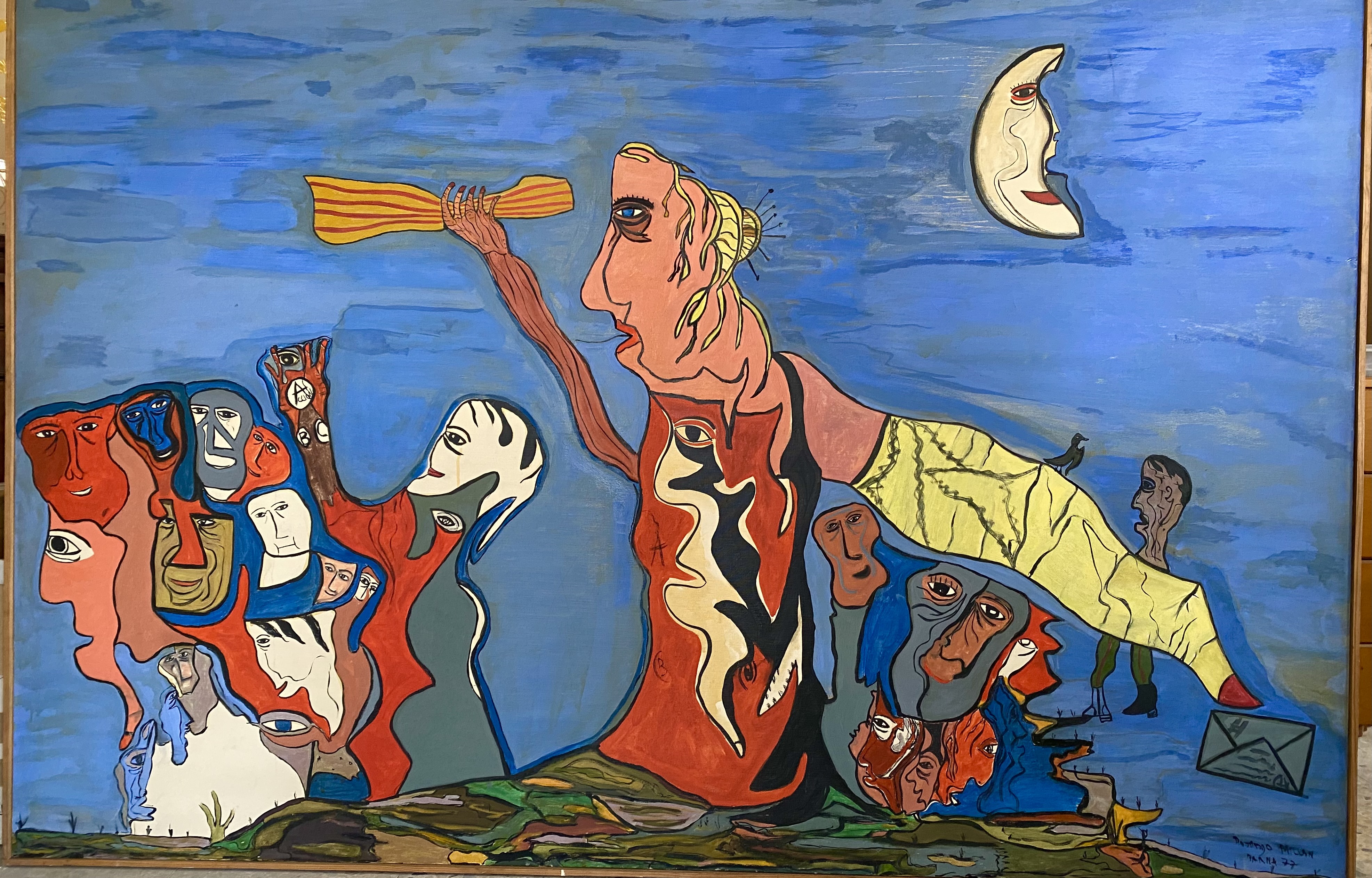
The Gernika’ of Barcelona.

